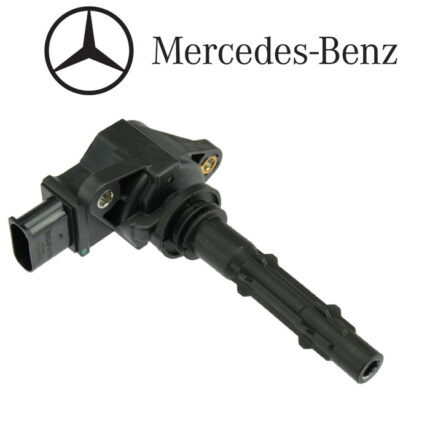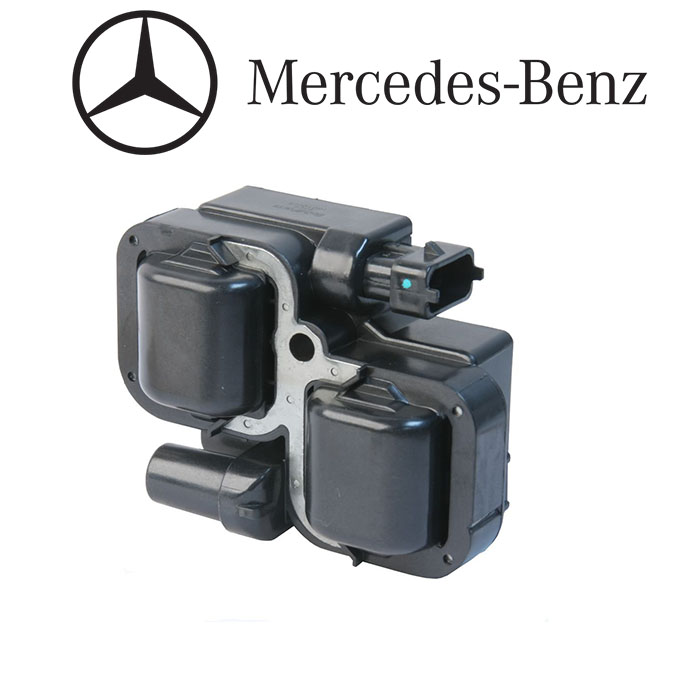-14%
Get Mercedes Benz C240 4Matic V6 2.6L Ignition Coil Pack 0001587803 in Kenya
The ignition coil pack is a vital component of modern distributor-less ignition systems (DIS). It plays a critical role in ensuring an internal combustion engine receives the necessary spark for ignition. Unlike traditional single ignition coils, a coil pack consists of multiple coils that serve different cylinders, providing more efficient and reliable ignition.
A malfunctioning ignition coil pack can lead to engine misfires, poor fuel economy, rough idling, and starting issues. Understanding how coil packs work, their types, and their maintenance can help prevent costly engine issues.
1. What is an Ignition Coil Pack?
An ignition coil pack is a set of multiple ignition coils used to provide high voltage to the spark plugs in modern vehicles. It replaces the older distributor-based ignition system and offers improved fuel efficiency, reliability, and performance.
1.1 How It Works
The coil pack consists of multiple primary and secondary windings that generate high voltage for the spark plugs. The process follows these steps:
- Battery Power Supply – The 12-volt battery sends power to the ignition coil pack.
- Magnetic Field Generation – The primary winding in the coil pack creates a magnetic field when current flows through it.
- Voltage Induction – When the current is interrupted by the ECU (Engine Control Unit), the magnetic field collapses, inducing a high voltage (30,000V to 50,000V or more) in the secondary winding.
- Spark Plug Firing – This high voltage is delivered to the spark plug, creating a spark to ignite the air-fuel mixture inside the cylinder.
Unlike a single ignition coil, a coil pack serves multiple cylinders, with each coil firing in sequence according to the engine’s firing order.
2. Types of Ignition Coil Packs
Different types of ignition coil packs are used depending on engine design and vehicle manufacturer preferences.
2.1 Wasted Spark Coil Pack
- Each coil serves two cylinders in a wasted spark system.
- One cylinder receives a strong spark (combustion cycle), while the other receives a weaker “wasted” spark during the exhaust stroke.
- Commonly found in older distributor-less ignition systems (DIS).
2.2 Coil-on-Plug (COP) Pack
- Each cylinder has its own individual coil, mounted directly on the spark plug.
- Eliminates the need for spark plug wires, improving ignition efficiency.
- Common in modern direct ignition systems.
2.3 Pencil Coil Pack
- A compact version of COP ignition coils, often found in turbocharged or performance engines.
- Offers improved spark energy and efficient packaging in tight engine bays.
2.4 Multi-Spark Coil Pack
- Some high-performance vehicles use coil packs that generate multiple sparks per cycle, improving combustion efficiency.
- Found in high-revving sports cars and racing engines.
3. Functions of an Ignition Coil Pack
3.1 Converts Low Voltage to High Voltage
- Steps up the 12V battery power to the 30,000V-50,000V range necessary for efficient ignition.
3.2 Improves Engine Performance
- Ensures a strong and consistent spark, leading to better acceleration, fuel economy, and lower emissions.
3.3 Reduces Emissions
- A properly functioning coil pack minimizes incomplete combustion, reducing the production of carbon monoxide (CO) and hydrocarbons (HCs).
3.4 Works in Sync with ECU Timing
- The coil pack is controlled by the Engine Control Unit (ECU), ensuring precise ignition timing for optimal power delivery.
4. Symptoms of a Failing Ignition Coil Pack
A malfunctioning ignition coil pack can cause various engine problems. Here are some warning signs:
4.1 Engine Misfires
- If a coil pack fails, one or more cylinders may misfire, causing jerking, hesitation, or reduced acceleration.
4.2 Rough Idling & Stalling
- A failing coil pack disrupts smooth engine operation, leading to vibrations, unstable idling, or engine stalling.
4.3 Poor Fuel Economy
- If the ignition coil pack is weak, the ECU compensates by injecting more fuel, leading to higher fuel consumption.
4.4 Hard Starting or No Start
- A damaged coil pack may prevent one or more cylinders from firing, making it difficult to start the engine.
4.5 Check Engine Light (CEL) On
- A faulty coil pack triggers misfire-related error codes (P0300-P0312), which can be diagnosed using an OBD-II scanner.
5. Ignition Coil Pack Maintenance and Replacement
5.1 Regular Inspection
- Check for cracks, burns, or corrosion on the coil pack housing.
- Inspect the wiring harness and connectors for loose or damaged connections.
5.2 Replacing Worn-Out Spark Plugs
- Bad spark plugs increase the workload on the coil pack, leading to premature failure.
- Replace spark plugs every 30,000-60,000 miles (as per manufacturer recommendations).
5.3 Using OEM or High-Quality Aftermarket Coil Packs
- Cheap or substandard ignition coils may cause poor performance, misfires, and shorter lifespan.
5.4 Keeping the Engine Cool
- Excessive engine heat can damage the ignition coil pack.
- Ensure proper cooling system maintenance to prevent overheating.
6. How to Test an Ignition Coil Pack
6.1 Resistance Test (Multimeter Method)
- Set a digital multimeter to the ohms (Ω) setting.
- Measure resistance:
- Primary coil resistance: Typically between 0.4 – 2 ohms.
- Secondary coil resistance: Between 6,000 – 10,000 ohms.
- If resistance is outside the specified range, the coil pack may be faulty.
6.2 OBD-II Scan Test
- Scan the ECU for misfire codes (P0300-P0312) and ignition coil faults (P0350-P0358).
6.3 Spark Test
- Remove a spark plug wire and insert a spark tester.
- Crank the engine and check for a strong blue spark.
- A weak or no spark indicates a faulty coil pack.
7. Conclusion
The ignition coil pack plays a crucial role in modern distributor-less ignition systems (DIS), ensuring efficient combustion, better performance, and lower emissions.
A failing coil pack can lead to misfires, rough idling, reduced power, and higher fuel consumption. Regular inspection, spark plug maintenance, and using high-quality parts can extend its lifespan and prevent engine problems.
Follow us on Facebook for more parts.




Reviews
Clear filtersThere are no reviews yet.